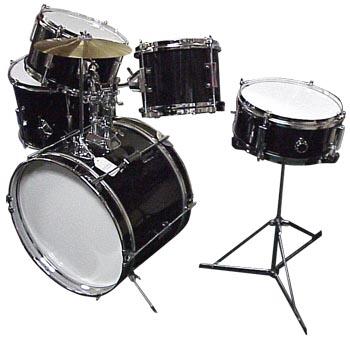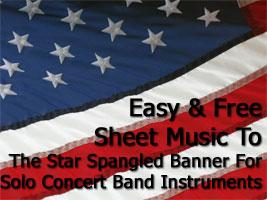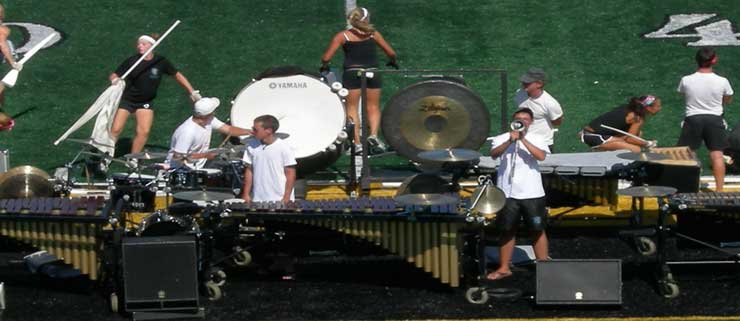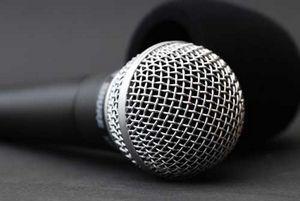
In Part I and Part II, I’ve covered some general considerations everyone should take into account when attempting to choose drum sizes for their jazz program. In Part III, I’ll suggest some tips for choosing cymbals and hardware. As always, remember that there are NO golden rules. I’m simply suggesting some options based on my own experience as a drummer, percussionist, and educator. One will, no doubt, find various opinions on all of these topics, and it will ultimately be up to you to decide what will work best for your situation.
Choosing jazz cymbals is, perhaps, the most difficult decision covered thus far. The ride cymbal is particularly important, simply because it is considered to be the “lead voice†of all the voices in the jazz drumset. The ride cymbal, in conjunction with the bass, propels the groove. As such, your ride cymbal must have characteristics that will match the musical situation. It is very important before you purchase cymbals to “map out†what you will be using these cymbals for--specifically.
On that note, I would highly discourage using nice jazz cymbals in the marching band or pep band. Jazz cymbals have qualities that will disappear if bashed on with heavy sticks on a daily basis. Similarly, I would discourage using marching band or pep band cymbals on the jazz drumset. Cymbals made for those situations will not achieve the sounds desired for jazz.
If you will be using the cymbals primarily for small-group jazz playing, I would recommend purchasing two ride cymbals, as opposed to one ride and one crash. Many people don’t realize this: if your ride cymbals are well-suited for jazz, they can produce the crash sounds desired (as well as an array of other sounds). The crash cymbal, in contrast, is not capable of serving as a good ride cymbal. By choosing two ride cymbals with contrasting sounds, a drummer can more easily provide different backdrops behind various soloists, without sacrificing the punch that is needed when things get hot. If you will be using the cymbals for big band playing, then a crash cymbal will be necessary. Also, when choosing a big band ride cymbal, be sure to select a cymbal that is articulate, but also light. In small group playing, this is not such an issue. But, in big band playing, the ride cymbal needs a little more thickness to cut through the large ensemble.
The weight or thickness of the cymbals that you choose for jazz is very important. In general, jazz cymbals should be much lighter than cymbals found in the marching band or rock band. Lighter cymbals produce a sound that is less harsh. Unfortunately, cymbal weight is something that is hard to talk about, given that most manufacturers do not list the weight of their cymbals. The salesperson at your local music store should be capable of helping you in this regard.
With regard to size, jazz ride cymbals are generally very large. I would recommend ride cymbals which are 20 or 22 inches in diameter. For crash cymbals, I would recommend at least 17 inches in diameter. And for hi-hats, I would recommend 14 inches in diameter.
Finally, the selection of hardware is a pretty simple decision. Most likely, the set that you purchase will already come with hardware, so there is no choice to be made. However, there are some tips to take into account if, in fact, you do have to make some choices.
Just to be clear, the term hardware refers to cymbal stands, tom mounts, snare stands, and any other metals included on a drumset. There are hundreds of styles and designs, all of which have benefits. Perhaps one of the most important choices when dealing with hardware is the issue of single or double-braced stand legs. Here are a few things to consider.
If you will be transporting this drumset often, you may want to consider single-braced legs. Double-braced legs add several more pounds to the overall weight of your hardware case, and this can cause serious back problems when lifting is necessary. Also, double braced stands contain many more nuts, bolts, washers, and screws. This means that there is more of a chance that they will, in time, create extraneous noises such as squeaks and rattles. If you plan on using your set in the recording studio, these sounds would be picked up by the microphones. However, if you anticipate that the students in your program will treat your equipment harshly, then perhaps the double-braced stands would be the best choice, since they are capable of “taking a beatingâ€.
In my next article in this series I will address some issues regarding drumhead selection and tuning. As always, if you have any questions or comments, I would love to hear from you. Please feel free to This email address is being protected from spambots. You need JavaScript enabled to view it. with any feedback.







 Scroll down to view the comparison chart of over a dozen different portable digital audio recorders.
Scroll down to view the comparison chart of over a dozen different portable digital audio recorders.